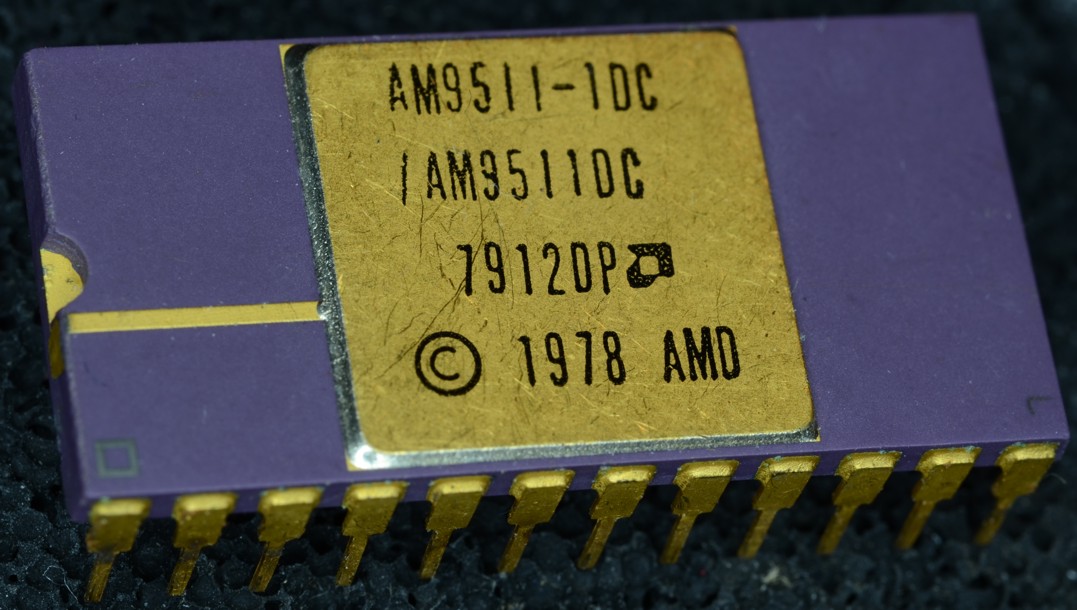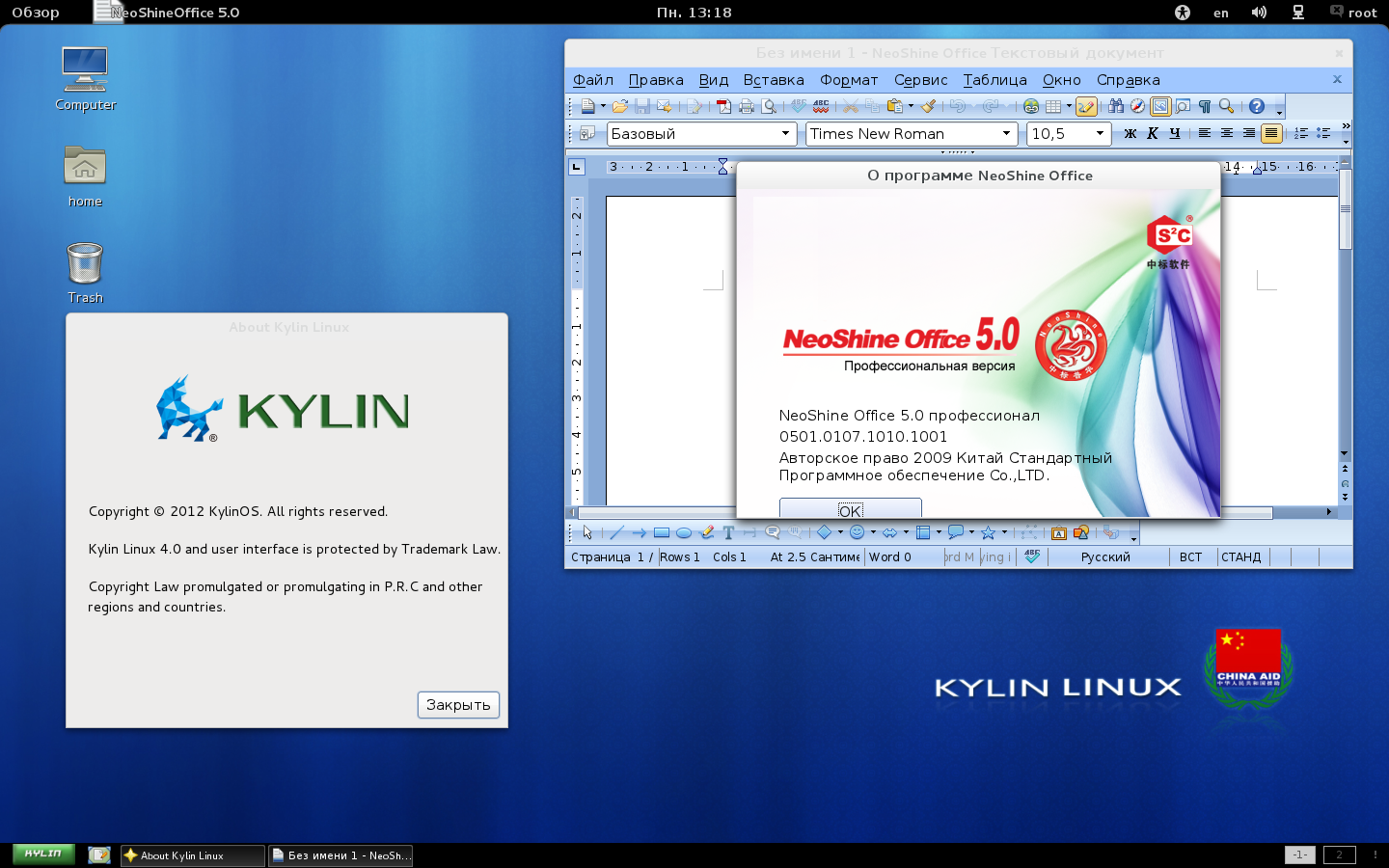|
Tianhe-2
Tianhe-2 or TH-2 (, i.e. 'Milky Way 2') is a 33.86-petaflops supercomputer located in the National Supercomputer Center in Guangzhou, China. It was developed by a team of 1,300 scientists and engineers. It was the world's fastest supercomputer according to the TOP500 lists for June 2013, November 2013, June 2014, November 2014, June 2015, and November 2015. The record was surpassed in June 2016 by the Sunway TaihuLight. In 2015, plans of the Sun Yat-sen University in collaboration with Guangzhou district and city administration to double its computing capacities were stopped by a U.S. government rejection of Intel's application for an export license for the CPUs and coprocessor boards. In response to the U.S. sanction, China introduced the Sunway TaihuLight supercomputer in 2016, which substantially outperforms the Tianhe-2 (and also affected the update of Tianhe-2 to Tianhe-2A replacing US tech), and now ranks fourth in the TOP500 list while using completely domestic technol ... [...More Info...] [...Related Items...] OR: [Wikipedia] [Google] [Baidu] |
TOP500
The TOP500 project ranks and details the 500 most powerful non- distributed computer systems in the world. The project was started in 1993 and publishes an updated list of the supercomputers twice a year. The first of these updates always coincides with the International Supercomputing Conference in June, and the second is presented at the ACM/IEEE Supercomputing Conference in November. The project aims to provide a reliable basis for tracking and detecting trends in high-performance computing and bases rankings on HPL, a portable implementation of the high-performance LINPACK benchmark written in Fortran for distributed-memory computers. The 60th TOP500 was published in November 2022. Since June 2022, USA's Frontier is the most powerful supercomputer on TOP500, reaching 1102 petaFlops (1.102 exaFlops) on the LINPACK benchmarks. The United States has by far the highest share of total computing power on the list (nearly 50%), while China currently leads the list in number ... [...More Info...] [...Related Items...] OR: [Wikipedia] [Google] [Baidu] |
Xeon Phi
Xeon Phi was a series of x86 manycore processors designed and made by Intel. It was intended for use in supercomputers, servers, and high-end workstations. Its architecture allowed use of standard programming languages and application programming interfaces (APIs) such as OpenMP. Xeon Phi launched in 2010. Since it was originally based on an earlier GPU design ( codenamed "Larrabee") by Intel that was cancelled in 2009, it shared application areas with GPUs. The main difference between Xeon Phi and a GPGPU like Nvidia Tesla was that Xeon Phi, with an x86-compatible core, could, with less modification, run software that was originally targeted to a standard x86 CPU. Initially in the form of PCIe-based add-on cards, a second-generation product, codenamed ''Knights Landing'', was announced in June 2013. These second-generation chips could be used as a standalone CPU, rather than just as an add-in card. In June 2013, the Tianhe-2 supercomputer at the National Supercomputer ... [...More Info...] [...Related Items...] OR: [Wikipedia] [Google] [Baidu] |
National University Of Defense Technology
The National University of Defense Technology (NUDT; ) is a national public research university in Changsha, Hunan, China. Founded in 1953 as the People's Liberation Army Military Academy of Engineering, the institution is directly affiliated to the Central Military Commission. The university is a Class A Double First Class University. It is under the direct leadership of China's Central Military Commission, and the dual management of the Ministry of National Defense and the Ministry of Education. It is designated for Double First Class University Plan, former Project 211 and Project 985, three national plans facilitating the development of Chinese higher education. NUDT was instrumental in the development of the Tianhe-2 supercomputer. History On 18 March 1952, as part of the development of the first five-year plan, Acting-Chief-of-Staff Nie Rongzhen and Deputy-Chief-of-Staff Su Yu presented the "Report on the Establishment of the Military Engineering Academy" to ... [...More Info...] [...Related Items...] OR: [Wikipedia] [Google] [Baidu] |
National Supercomputer Center In Guangzhou
The National Supercomputer Center in Guangzhou houses Tianhe-2 Tianhe-2 or TH-2 (, i.e. 'Milky Way 2') is a 33.86-petaflops supercomputer located in the National Supercomputer Center in Guangzhou, China. It was developed by a team of 1,300 scientists and engineers. It was the world's fastest supercomputer ..., which is currently the seventh fastest supercomputer in the world, with a measured 33.86 petaflop/s (quadrillions of calculations per second). Tianhe-2 is operated by the National University of Defence Technology, and owned by the Chinese government. See also * Supercomputing in China * National Supercomputing Center of Tianjin * National Supercomputing Center (Shenzhen) * Shanghai Supercomputer Center References External linksNational Supercomputing Center in Guangzhou Guangzhou Computer science institutes in China Science and technology in China Supercomputer sites Supercomputing in China 2014 establishments in China {{China-struct-stub ... [...More Info...] [...Related Items...] OR: [Wikipedia] [Google] [Baidu] |
Titan (supercomputer)
Titan or OLCF-3 was a supercomputer built by Cray at Oak Ridge National Laboratory for use in a variety of science projects. Titan was an upgrade of Jaguar, a previous supercomputer at Oak Ridge, that uses graphics processing units (GPUs) in addition to conventional central processing units (CPUs). Titan was the first such hybrid to perform over 10 petaFLOPS. The upgrade began in October 2011, commenced stability testing in October 2012 and it became available to researchers in early 2013. The initial cost of the upgrade was US$60 million, funded primarily by the United States Department of Energy. Titan was eclipsed at Oak Ridge by Summit in 2019, which was built by IBM and features fewer nodes with much greater GPU capability per node as well as local per-node non-volatile caching of file data from the system's parallel file system. Titan employed AMD Opteron CPUs in conjunction with Nvidia Tesla GPUs to improve energy efficiency while providing an order of magnitud ... [...More Info...] [...Related Items...] OR: [Wikipedia] [Google] [Baidu] |
Graph500
The Graph500 is a rating of supercomputer systems, focused on data-intensive loads. The project was announced on International Supercomputing Conference in June 2010. The first list was published at the ACM/IEEE Supercomputing Conference in November 2010. New versions of the list are published twice a year. The main performance metric used to rank the supercomputers is GTEPS (giga- traversed edges per second). Richard Murphy from Sandia National Laboratories, says that "The Graph500's goal is to promote awareness of complex data problems", instead of focusing on computer benchmarks like HPL (High Performance Linpack), which TOP500 is based on. Despite its name, there were several hundreds of systems in the rating, growing up to 174 in June 2014. The algorithm and implementation that won the championship is published in the paper titled "Extreme scale breadth-first search on supercomputers". There is also list Green Graph 500, which uses same performance metric, but sorts li ... [...More Info...] [...Related Items...] OR: [Wikipedia] [Google] [Baidu] |
Supercomputer
A supercomputer is a computer with a high level of performance as compared to a general-purpose computer. The performance of a supercomputer is commonly measured in floating-point operations per second (FLOPS) instead of million instructions per second (MIPS). Since 2017, there have existed supercomputers which can perform over 1017 FLOPS (a hundred quadrillion FLOPS, 100 petaFLOPS or 100 PFLOPS). For comparison, a desktop computer has performance in the range of hundreds of gigaFLOPS (1011) to tens of teraFLOPS (1013). Since November 2017, all of the world's fastest 500 supercomputers run on Linux-based operating systems. Additional research is being conducted in the United States, the European Union, Taiwan, Japan, and China to build faster, more powerful and technologically superior exascale supercomputers. Supercomputers play an important role in the field of computational science, and are used for a wide range of computationally intensive tasks in v ... [...More Info...] [...Related Items...] OR: [Wikipedia] [Google] [Baidu] |
Coprocessor
A coprocessor is a computer processor used to supplement the functions of the primary processor (the CPU). Operations performed by the coprocessor may be floating-point arithmetic, graphics, signal processing, string processing, cryptography or I/O interfacing with peripheral devices. By offloading processor-intensive tasks from the main processor, coprocessors can accelerate system performance. Coprocessors allow a line of computers to be customized, so that customers who do not need the extra performance do not need to pay for it. Functionality Coprocessors vary in their degree of autonomy. Some (such as FPUs) rely on direct control via coprocessor instructions, embedded in the CPU's instruction stream. Others are independent processors in their own right, capable of working asynchronously; they are still not optimized for general-purpose code, or they are incapable of it due to a limited instruction set focused on accelerating specific tasks. It is common for these to be d ... [...More Info...] [...Related Items...] OR: [Wikipedia] [Google] [Baidu] |
Kylin (operating System)
Kylin () is an operating system developed by academics at the National University of Defense Technology in the People's Republic of China since 2001. It is named after the mythical beast ''qilin''. The first versions were based on FreeBSD and were intended for use by the Chinese military and other government organizations. With version 3.0 Kylin became Linux-based, and there is a version called NeoKylin which was announced in 2010. By 2019 NeoKylin variant is compatible with more than 4,000 software and hardware products and it ships pre-installed on most computers sold in China. Together, Kylin and Neokylin have 90% market share of the government sector. A separate project using Ubuntu as the base Linux operating system was announced in 2013. The first version of Ubuntu Kylin was released in April 2013. In August 2020, v10 of Kylin OS was launched. It is compatible with 10,000 hardware and software products and it "supports Google's Android ecosystem". In July 2022, an open-so ... [...More Info...] [...Related Items...] OR: [Wikipedia] [Google] [Baidu] |
Sunway TaihuLight
The Sunway TaihuLight ( ''Shénwēi·tàihú zhī guāng'') is a Chinese supercomputer which, , is ranked fourth in the TOP500 list, with a LINPACK benchmark rating of 93 petaflops. The name is translated as ''divine power, the light of Taihu Lake''. This is nearly three times as fast as the previous Tianhe-2, which ran at 34 petaflops. , it is ranked as the 16th most energy-efficient supercomputer in the Green500, with an efficiency of 6.051 MFLOPS/W, GFlops/watt. It was designed by the National Research Center of Parallel Computer Engineering & Technology (NRCPC) and is located at the National Supercomputing Center in Wuxi in the city of Wuxi, in Jiangsu province, China. The Sunway TaihuLight was the world's fastest supercomputer for two years, from June 2016 to June 2018, according to the TOP500 lists. The record was surpassed in June 2018 by IBM's Summit (supercomputer), Summit. Architecture The Sunway TaihuLight uses a total of 40,960 Chinese-designed SW26010 Manycore proc ... [...More Info...] [...Related Items...] OR: [Wikipedia] [Google] [Baidu] |
863 Program
The 863 program () or State High-Tech Development Plan () was a program funded and administered by the government of the People's Republic of China intended to stimulate the development of advanced technologies in a wide range of fields for the purpose of rendering China independent of financial obligations for foreign technologies. It was inspired by the Strategic Defense Initiative proposed by U.S. President Ronald Reagan in 1983, and was ended in 2016. On March 3, 1986, the program was suggested by Wang Daheng, Wang Ganchang, Yang Jiachi, and Chen Fangyun in a letter to China's paramount leader Deng Xiaoping, who approved the program within 2 days. The program was initially led by Zhao Ziyang, who was the Premier of China at the time, and received a governmental fund of 10 billion RMB in 1986, which accounts for 5% of the total government spending that year. Among the products known to have resulted from the 863 program are the Loongson computer processor family (origi ... [...More Info...] [...Related Items...] OR: [Wikipedia] [Google] [Baidu] |





